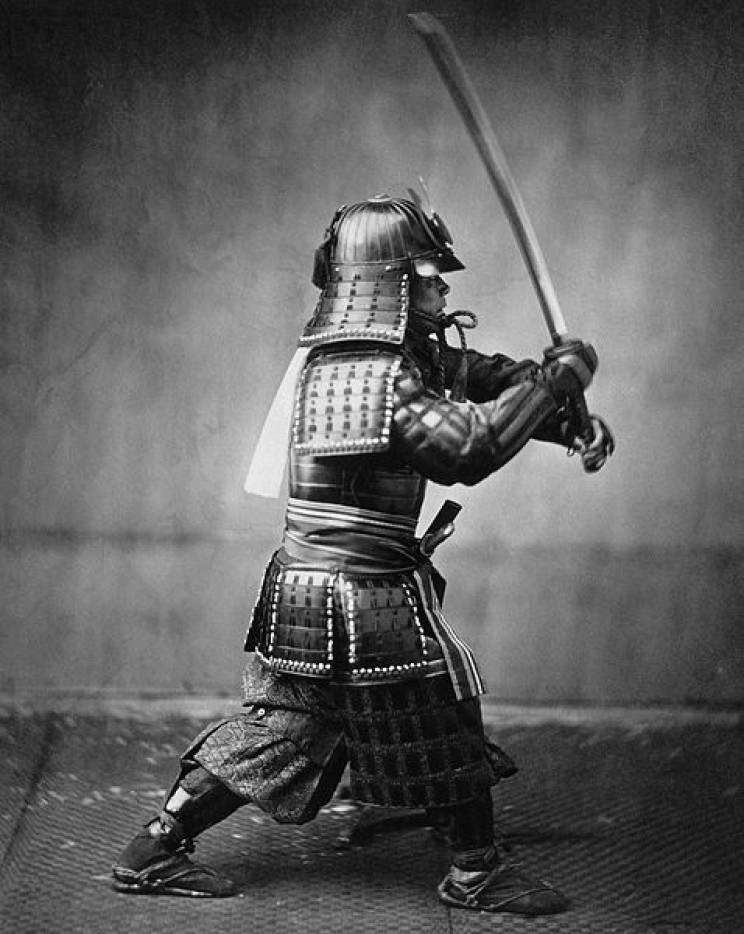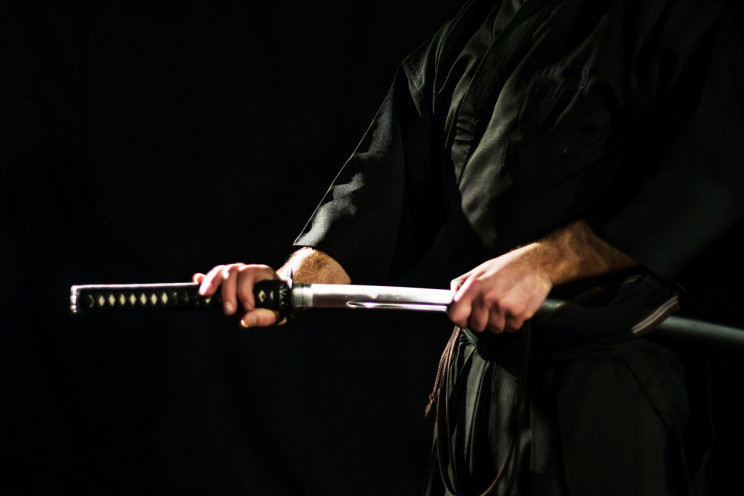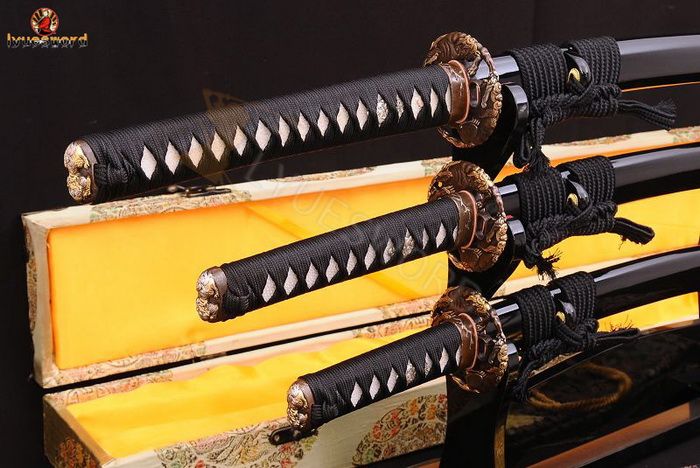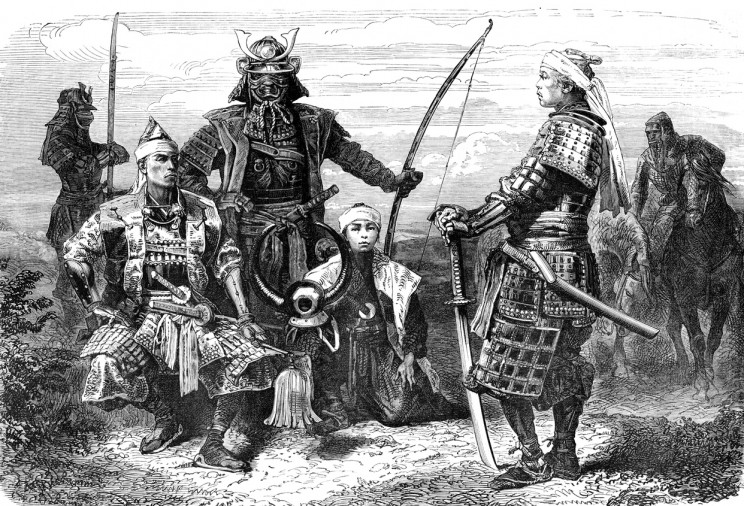By lyuesword | 17 July 2020 | 1 Comments
Secrets of Samurai Sword - What Makes Traditional Japanese Swords So Special
What Makes Traditional Japanese Swords So Special
Historically, Japanese swords have been called the soul of the samurai. These intricately made weapons are perhaps the most famous, iconic type of sword to have existed.
Japanese swords have long been considered more than just a simple weapon. They are also status symbols, works of art, and have also had a spiritual significance throughout Japanese history.
Here are 12 facts about why samurai swords are so special, including why they can take more than a year to make.
1. Japanese swords are part of a tradition that goes back centuries
The art of Japanese swordmaking has been traced back by historians to as far back as the Kofun period in Japan, which ran from about 300 to 538 AD. Though the earliest samurai are thought to have favored bows over swords, the sword was soon adopted as a symbol of rank for the samurai class.
2. The tradition of Japanese swordmaking continues to this day

Despite the fact that the samurai class was abolished shortly after Japan's feudal era came to an end in 1868, the ancient traditional art of swordmaking is still practiced today.
Today, the city of Seki, which has been renowned for its bladesmiths throughout history, still holds a festival every autumn called Hamono Matsuri, in which swordsmiths show off their newly crafted blades.
3. The samurai sword was part of Japan's popular culture centuries before anime was a thing
As the woodblock print above — which shows two actors in a play at Ichimura theatre depicting samurai life as far back as 1852 — attests, the samurai culture has long been idealized and highly regarded in Japanese culture.
The stylistic dance performances of Kabuki theatre, which date back to the early 17th century, often portrayed samurai in battle.
4. Becoming a swordsmith in Japan takes a 5-year apprenticeship

To become a Japanese swordsmith, one must undertake an apprenticeship with a master sword maker for five months. Once prospective smiths finish their training, they still have to pass a national certification test that takes place over a period of eight days. Once certified, building a reputation as a respected sword maker can take years. There are only around 180 working tradition Japanese swordsmiths today.
5. Samurai sword hilts and handguards, known as Tsuba, are made with incredible artistry

A tsuba, the decorative handguard of a samurai sword, can be more important and valuable for a collector than the blade itself. By themselves, they can be worth tens of thousands of dollars.
6. Many Japanese swordsmiths have had their own distinctive signature Hamon line

'Hamon' translated from Japanese literally means blade pattern. The pattern is etched onto a blade when it is heat-treated and differentially hardened so that the cutting edge is harder than the spine. Japanese swordsmiths throughout history have differentiated their work from others with intricate patterns.
7. Historically, the Japanese sword polisher was just as important as the smith
The relationship between polisher and swordsmith in Japan has been compared to that of the composer and the musician. Both are needed to craft a beautifully realized work of art.
When a smith has finished making the blade, its main features are invisible until a polisher goes to work bringing out the quality of the craftsmanship. A poor polishing job can completely ruin months of work. Polishing is essential as it brings out the steel’s grain and temper line, which are vital to a sword's appearance and overall value.
8. The blades can be sold for thousands of dollars
As a 1992 New York Times article about a Japanese swords auction at Christie's, New York pointed out, the most expensive sword at the sale was a 13th-century Kamakura blade that was sold for $418,000.
9. It was believed that a well-crafted Japanese sword could dispel evil

Samurai did not only use the blades for fighting. The swords were traditionally also viewed as a symbol of purity that could be worn to fend off evil spirits.
10. They are sold in Japan today as a talisman
Most people who buy swords off him today, buy them as a symbol of luck, usually to commemorate family events and to bring luck to newlyweds and newborn babies.
11. The Token Kai was founded in 1900 to preserve the craftsmanship of Japanese swordmaking
Realizing that traditional sword making would disappear if no action was taken, the Japanese government founded the Token Kai in 1900, which was tasked with researching Japanese swords and preserving their craftsmanship.
12. One of the most famous samurai swords ever built was lost after WWII
One of the most famous samurai swords to have ever been crafted is the Honjo Masamune. It was made by master swordsmith Honjo Masamune (c.1264-1343) and was passed down for generation during Japan's prosperous Edo period.
Unfortunately, the Japanese national treasure was handed over to the Allied forces at the end of WWII and its location is not known.
Want a unique sword? Feel free to contact us:
Email: lyuesword@hotmail.com
Website: www.lyuesword.com
Custom Sword Page: www.lyuesword.com/Custom-Sword/customization-options/Create-Your-Own-Swords
Historically, Japanese swords have been called the soul of the samurai. These intricately made weapons are perhaps the most famous, iconic type of sword to have existed.
Japanese swords have long been considered more than just a simple weapon. They are also status symbols, works of art, and have also had a spiritual significance throughout Japanese history.
Here are 12 facts about why samurai swords are so special, including why they can take more than a year to make.
1. Japanese swords are part of a tradition that goes back centuries
The art of Japanese swordmaking has been traced back by historians to as far back as the Kofun period in Japan, which ran from about 300 to 538 AD. Though the earliest samurai are thought to have favored bows over swords, the sword was soon adopted as a symbol of rank for the samurai class.
2. The tradition of Japanese swordmaking continues to this day

Despite the fact that the samurai class was abolished shortly after Japan's feudal era came to an end in 1868, the ancient traditional art of swordmaking is still practiced today.
Today, the city of Seki, which has been renowned for its bladesmiths throughout history, still holds a festival every autumn called Hamono Matsuri, in which swordsmiths show off their newly crafted blades.
3. The samurai sword was part of Japan's popular culture centuries before anime was a thing
As the woodblock print above — which shows two actors in a play at Ichimura theatre depicting samurai life as far back as 1852 — attests, the samurai culture has long been idealized and highly regarded in Japanese culture.
The stylistic dance performances of Kabuki theatre, which date back to the early 17th century, often portrayed samurai in battle.
4. Becoming a swordsmith in Japan takes a 5-year apprenticeship

To become a Japanese swordsmith, one must undertake an apprenticeship with a master sword maker for five months. Once prospective smiths finish their training, they still have to pass a national certification test that takes place over a period of eight days. Once certified, building a reputation as a respected sword maker can take years. There are only around 180 working tradition Japanese swordsmiths today.
5. Samurai sword hilts and handguards, known as Tsuba, are made with incredible artistry

A tsuba, the decorative handguard of a samurai sword, can be more important and valuable for a collector than the blade itself. By themselves, they can be worth tens of thousands of dollars.
6. Many Japanese swordsmiths have had their own distinctive signature Hamon line

'Hamon' translated from Japanese literally means blade pattern. The pattern is etched onto a blade when it is heat-treated and differentially hardened so that the cutting edge is harder than the spine. Japanese swordsmiths throughout history have differentiated their work from others with intricate patterns.
7. Historically, the Japanese sword polisher was just as important as the smith
The relationship between polisher and swordsmith in Japan has been compared to that of the composer and the musician. Both are needed to craft a beautifully realized work of art.
When a smith has finished making the blade, its main features are invisible until a polisher goes to work bringing out the quality of the craftsmanship. A poor polishing job can completely ruin months of work. Polishing is essential as it brings out the steel’s grain and temper line, which are vital to a sword's appearance and overall value.
8. The blades can be sold for thousands of dollars
As a 1992 New York Times article about a Japanese swords auction at Christie's, New York pointed out, the most expensive sword at the sale was a 13th-century Kamakura blade that was sold for $418,000.
9. It was believed that a well-crafted Japanese sword could dispel evil

Samurai did not only use the blades for fighting. The swords were traditionally also viewed as a symbol of purity that could be worn to fend off evil spirits.
10. They are sold in Japan today as a talisman
Most people who buy swords off him today, buy them as a symbol of luck, usually to commemorate family events and to bring luck to newlyweds and newborn babies.
11. The Token Kai was founded in 1900 to preserve the craftsmanship of Japanese swordmaking
Realizing that traditional sword making would disappear if no action was taken, the Japanese government founded the Token Kai in 1900, which was tasked with researching Japanese swords and preserving their craftsmanship.
12. One of the most famous samurai swords ever built was lost after WWII
One of the most famous samurai swords to have ever been crafted is the Honjo Masamune. It was made by master swordsmith Honjo Masamune (c.1264-1343) and was passed down for generation during Japan's prosperous Edo period.
Unfortunately, the Japanese national treasure was handed over to the Allied forces at the end of WWII and its location is not known.
Want a unique sword? Feel free to contact us:
Email: lyuesword@hotmail.com
Website: www.lyuesword.com
Custom Sword Page: www.lyuesword.com/Custom-Sword/customization-options/Create-Your-Own-Swords
Recently Reviews
Read MoreLeave a Reply
Your email address will not be published.Required fields are marked. *